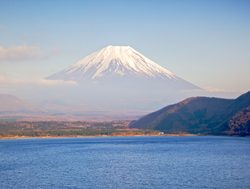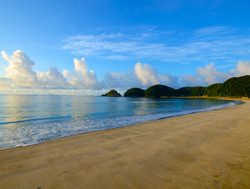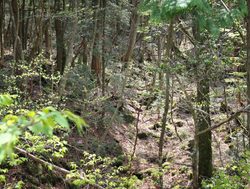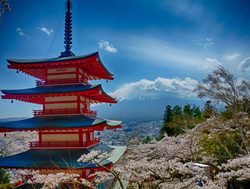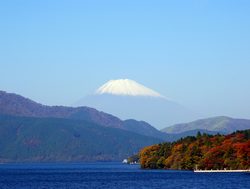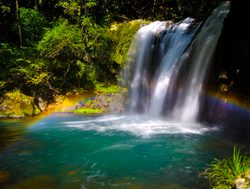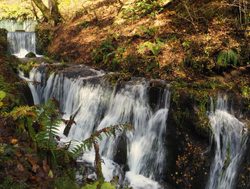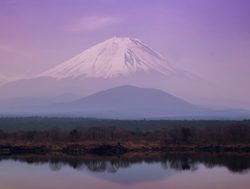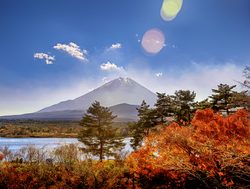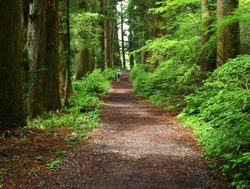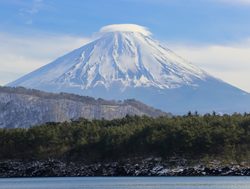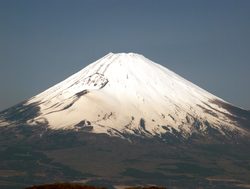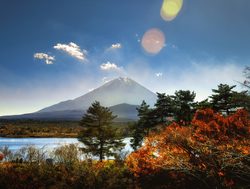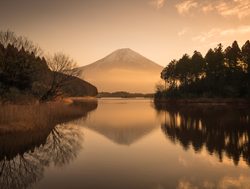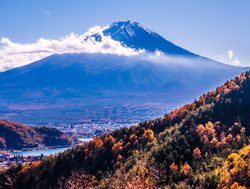
Quick Navigation
Fuji-Hakone-Izu National Park is located in three different prefectures that include Kanagawa, Shizuoka, and Yamanashi. The city of Tokyo looks out toward Mount Fuji is counted as part of the park area.
The national park is spread across 474 square miles (1,227 sq km). It is home to Fuji Five Lakes, Hakone, Izu Islands, the Izu Peninsula, and Mount Fuji. This national park is unique compared to most parks; it represents a collection of different areas versus the traditional singularly enclosed area.
Fuji-Hakone-Izu National Park is rich in biodiversity featuring natural hot springs, lakes, mountainous lakes, Mount Fuji, coastlines, and approximately 1,000 volcanic islands. Vegetation reflects the diversity ranging from mountainous trees to subtropical plant life found on the islands.
The national park is grouped into four key areas which include the Mount Fuji area, Hakone area, Izu Peninsula, and the Izu Islands. This is the pinnacle nature attraction of Japan.
Highlights
The Fuji-Hakone-Izu national park and the surrounding area feature an array of Japanese cultural and natural highlights. Many people come specifically for the cherry blossoms in the spring, however without question, Mount Fuji is the pinnacle and leading attraction of the national park.
Mount Fuji
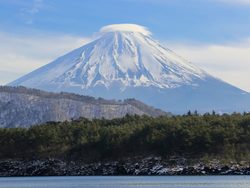 Mount Fuji is probably one of the top tourist destinations for the country of Japan. The good news is that with its close proximity to the city of Tokyo, it is easy for visitors to see. Drives around the region provide a number of scenic views of the majestic mountain.
Mount Fuji is probably one of the top tourist destinations for the country of Japan. The good news is that with its close proximity to the city of Tokyo, it is easy for visitors to see. Drives around the region provide a number of scenic views of the majestic mountain.
Mount Fuji is the highest volcano in Japan reaching a peak of 12,389 feet (3,776 m). It is recognized as an exemplary example of a symmetrical cone-shaped volcano. It is one of the three holy mountains of Japan and it is a UNESCO World Heritage Site. It is the tallest mountain in the country.
There are glorious views of the mountain from several different scenic vistas. As noted above, one of the favorite times of year to view the mountain is during the spring when the cherry trees blossom. Some of the most striking images of Mount Fuji occur when they are framed with blossoming cherry trees in the foreground.
Mount Fuji last erupted in 1707, however, it is still recognized as an active volcano. The dormant volcano is also known as Fujisan, Fujiyama, or simply Fuji by locals.
Seeing Mount Fuji is sufficient for most people, however the more adventurous want to trek and climb the mountain. Reaching the summit of the mountain is a challenge, but it is rewarding with a more intimate understanding of the mountain as well as the astounding panoramic views of Tokyo and the surrounding landscapes below.
Fuji-Hakone-Izu National Park Trails
There are different trails and places to hike and explore throughout the different areas that combine to create the larger national park. Most of the walks and hikes are around lakes and vistas that provide views of Mount Fuji. However, there are a variety of ways to ascend to the summit of the mountain. Each of them is rated challenged and it is recommended that you be in good physical condition before making the ascent.
Park Protection
Fuji-Hakone-Izu National Park was created to protect Japan's tallest mountain as well as the some of the surrounding landscapes. The park protects five lakes, the Izu Islands, and the Izu Peninsula. Collectivley, the four regions of the park protect different unique aspects of nature. The national park also protects Mount Fuji which is one of the country's sacred mountains.
The Japanese government established these protected areas to make sure that future generations of Japanese and global visitors would be able to enjoy this spectacular mountain.
Fuji-Hakone-Izu Highlights
- Climbing Mount Fuji
- Seeing Mount Fuji on a blue sky day, with fall colors, or cherry blossom season
- Views of Mount Fuji across the Fuji Five lakes
- View of Mount Fuji across Lake Ashi in the Hakone area
- Alligators in the Izu Peninsula area at the Utagawa Gardens
- Scuba diving amongst the Izu Islands
Park Map
Sources
- All Trails, Best Trails in Fuji-Hakone-Izu National Park, https://www.alltrails.com/parks/japan/yamanashi/fuji-hakone-izu-national-park, retrieved July 2020.
- Britannica, Mount Fuji, https://www.britannica.com/place/Mount-Fuji, retrieved July 2020.
- Encyclopedia Britannica, Fuji-Hakone-Izu National Park, https://www.britannica.com/place/Fuji-Hakone-Izu-National-Park, retrieved August 2019.
- Japan Guide, Hakone, https://www.japan-guide.com/e/e5200.html, retrieved August 2019
- Izuhakone Railway, Where to go in Fuji-Hakone-Izu, https://www.fujihakoneizu.com/, retrieved August 2019
- Ministry of the Environment, Fuji-Hakone-Izu National Park, https://www.env.go.jp/en/nature/nps/park/fujihakone/index.html, retrieved Aug 2019.
- National Parks of Japan, Fuji-Hakone-Izu National Park, https://www.japan.travel/national-parks/parks/fuji-hakone-izu/, retrieved August 2019.
